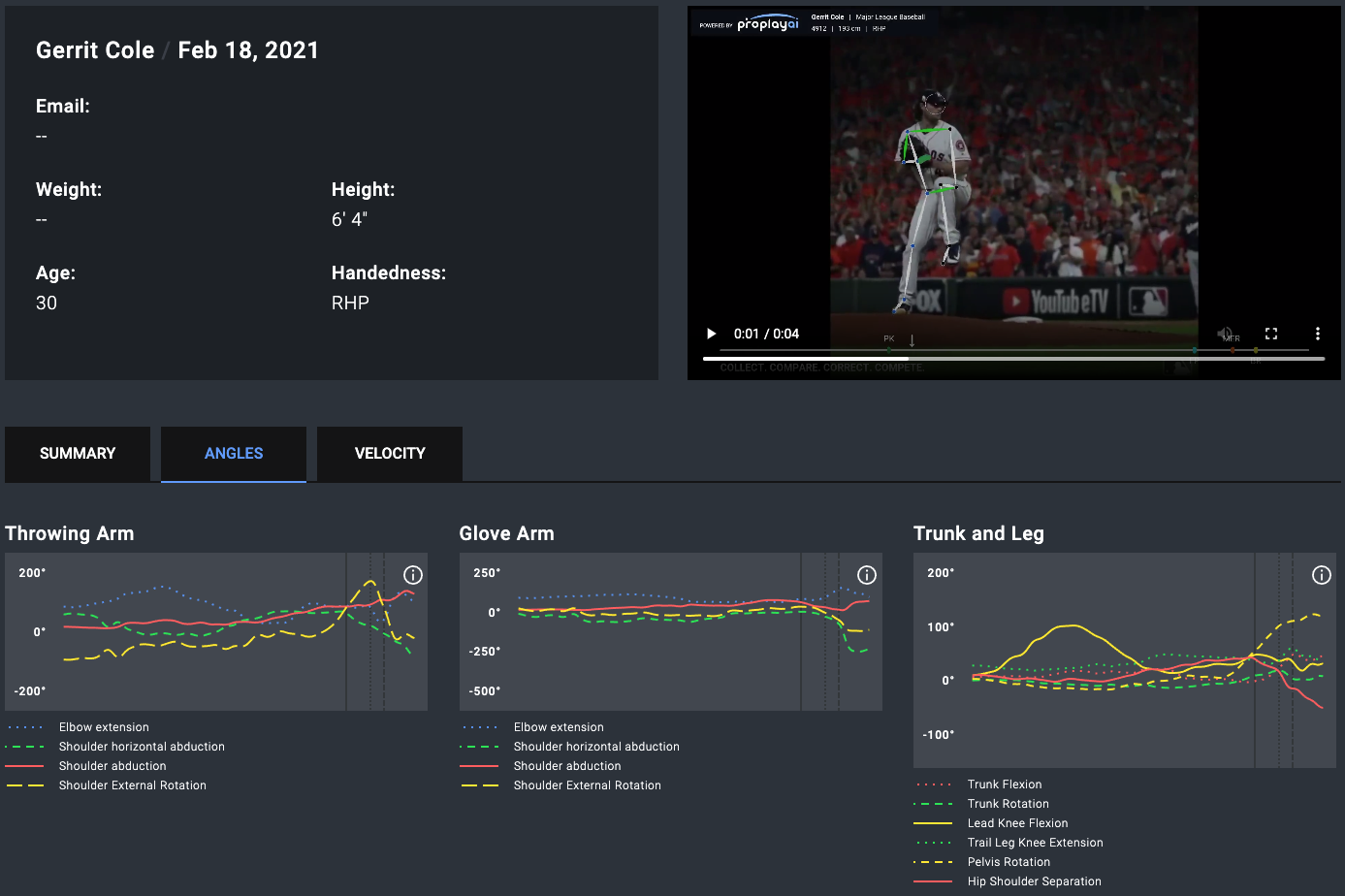Introduction to
Biomechanics Using PitchAI
Colin McKinnon, PhD / Elora Brenneman Wilson, PhD
- Introduction
- Exercise
- Basic Metrics
- Intermediate Metrics
- Advanced Metrics
- Expert Metrics
- Wrap Up
- Quiz
Expert Metrics
The tabs marked angles and velocity represent the changes in joint angle throughout the course of the entire pitch. The PitchAI biomechanics team uses a method called “rubber banding”, which recognizes two time points (the start and the end of the pitch), and then converts all data to be the same number of frames. This allows us to make easy comparisons between animations and full waveform kinematics reports – like you will see in our angles and velocity tabs. Like in most biomechanical analyses, looking at these graphs requires a lot of interpretation and are typically reserved for our most experienced users. A specific joint angle does not necessarily indicate good or bad mechanics for a pitcher – but, we can compare a pitcher’s reported joint angles against what our database deems to be average to give you a quick idea as to how a pitcher is performing. The velocities are simply how the joint angles change over a short period of time.

On these graphs, you’ll see line form graphs, as well as some vertical lines. These lines represent some key points in time that are traditionally associated with biomechanical analyses: Foot Plant (FP), Maximum External Rotation (MER), and Ball Release (BR).
The angles and velocity tabs require the most expertise in our system, but once you get comfortable with these data they can be very insightful.
Throwing and Glove Arm
External Rotation – holding the right arm out to the side, with the elbow flexed to 90 degrees, rotate the upper arm clockwise. This rotation of the upper arm is referred to as external rotation. In the pitching motion, this is often described as layback.
Elbow Flexion – holding the arm straight, bend the elbow bringing the forearm towards the upper arm (as if doing a biceps curl). 0 degrees represents a completely straight arm, and 180 degrees represents a completely folded arm (not likely to be possible). This is elbow flexion.
Horizontal Abduction – holding the arm directly out to the side, move the arm so it is pointing directly in front of the body. This is referred to as negative horizontal abduction. Scapular retraction, or, cocking the arm behind your body, is positive horizontal abduction.
Abduction – holding the arm directly out to the side, lower the arm to the side. This is decreasing abduction. Raising the arm straight out to the side, and continuing up to above the head is positive abduction.
Trunk and Legs
Knee Flexion – Bending the knee as far as you can is peak knee flexion and a fully straight knee is considered zero degrees of flexion.
Trunk Lateral Tilt – Standing straight up, hinge at the waist to the side of the body. Bending towards home plate would be positive lateral trunk tilt, and negative trunk tilt would be bending away from home plate.
Pelvis Rotation – The turning of the pelvis towards home plate. 0 degrees is facing completely on the open side, and 90 degrees is facing home plate.
Trunk Rotation – the turning of the trunk towards home plate. 0 degrees is facing completely on the open side, and 90 degrees is facing home plate.
Hip-to-shoulder separation – the difference in rotation? angles between trunk and pelvis.
Trunk Flexion – Standing upright, hinging at the waist and bending toward the ground is positive trunk flexion.
